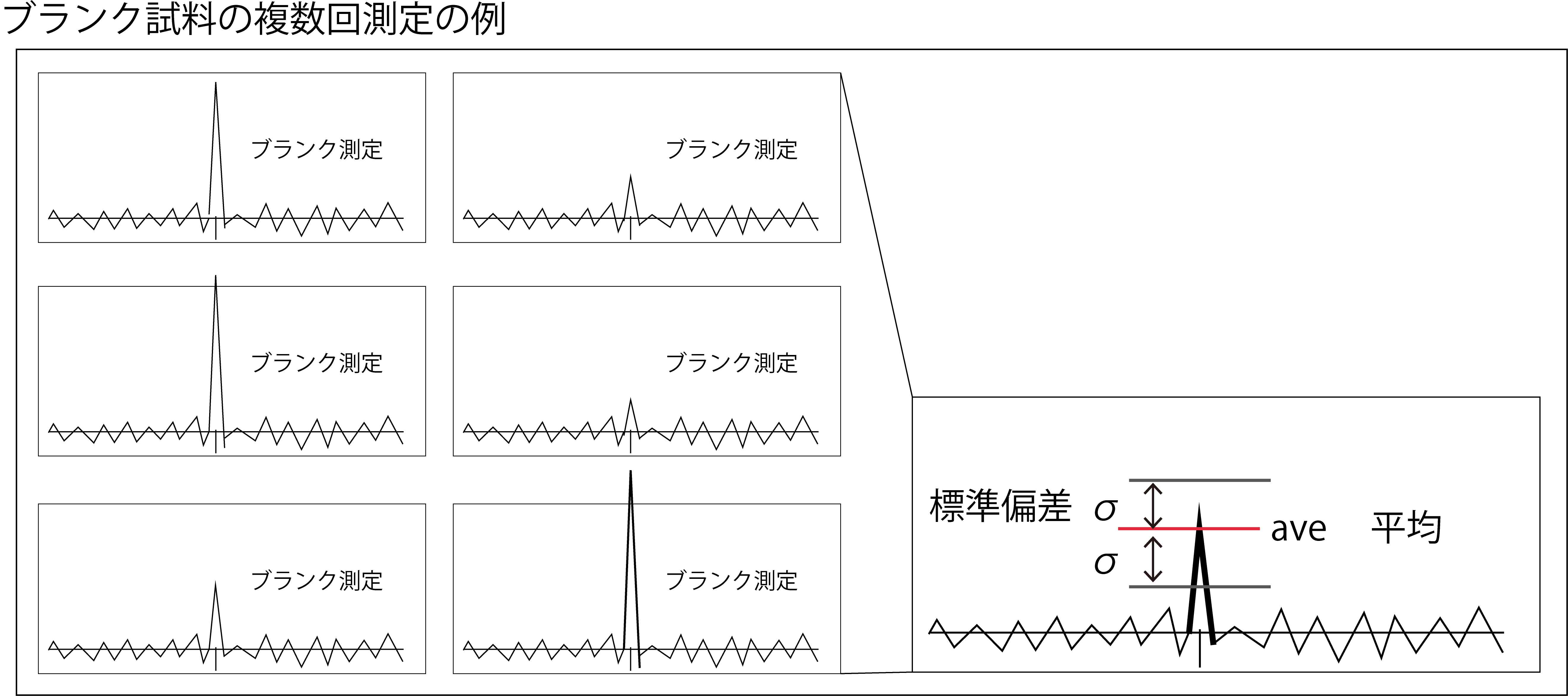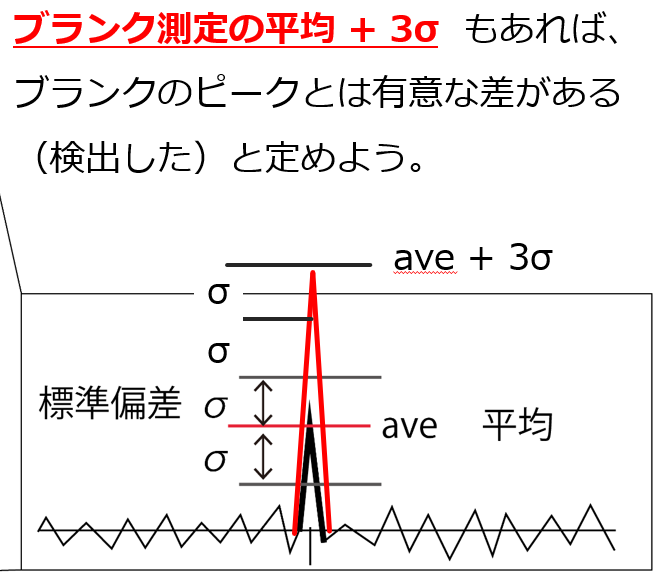② When there is a signal strength that shows a peak for unknown reasons during blank measurement
Even if you measure a blank sample (a sample that does not contain the target component), peaks may be detected for some reason. This is often caused by contamination of target components from sample processing or analysis lines. In this case, repeat the blank measurement 10 times and find the standard deviation σ of the blank signal intensity.

ブランクを測定しても、ノイズに比べて有意な差を持つ信号強度が得られる場合
When measuring a blank yields a signal strength with a significant difference compared to the noise
分析捜査における汚染が原因Caused by contamination in analytical investigation
If the signal intensity of the peak that appears in the blank measurement is exactly the same no matter how many times it is measured, it is considered that the signal intensity is added by that amount (wearing clogs) even in the unknown sample measurement. If so, you can subtract the signal intensity of the blank from the measurement results of the unknown sample. However, the blank must be measured repeatedly to confirm its repeatability. In particular, it is necessary to check whether there is a significant difference (detected) with respect to the blank.
The figure below shows an example of the results of multiple blank measurements. It was found that there was variation in the size of the peaks observed in blank measurements. In the figure below, "ave" represents the average value from repeated measurements of the blank, and "σ" represents the standard deviation.

ブランク試料の複数回測定の例Example of multiple measurements of blank sample 標準偏差standard deviation 平均average
Taking into account the variation due to blank measurements, a peak that is "average, plus, three times the standard deviation of blank measurements" will be recognized as having a significant difference from the blank peak. Therefore, as shown in the figure below, the detection limit value is set as ave + 3σ. (Depending on the purpose of analysis, it may be set as ave + 10σ, etc.)

ブランク測定の平均+3σもあれば、ブランクのピークとは有意な差がある(検出した)と認めようIf the blank measurement average + 3σ is also found, it is recognized that there is a significant difference (detected) from the blank peak.
Of course, even if a peak is seen in a blank measurement, the quantifiable range is
"The range that can be plotted on a reliable calibration curve after clearing the detection limit"
The lower limit of quantification is the lower limit of the quantifiable range.